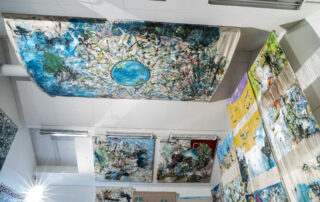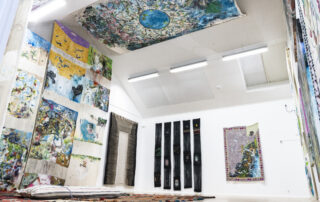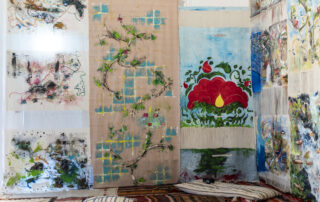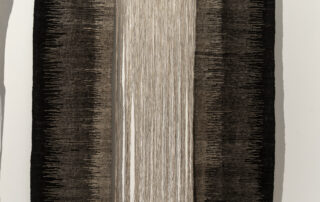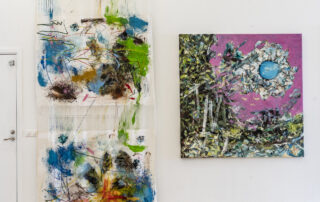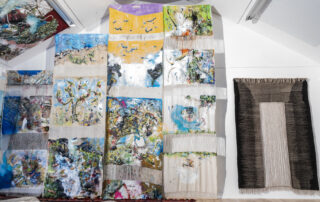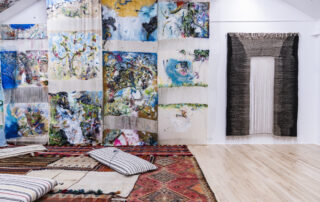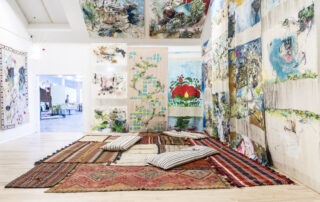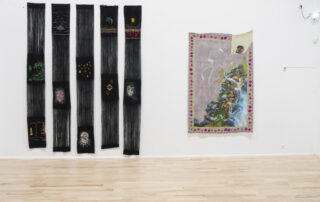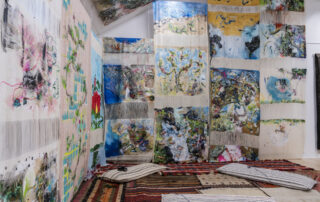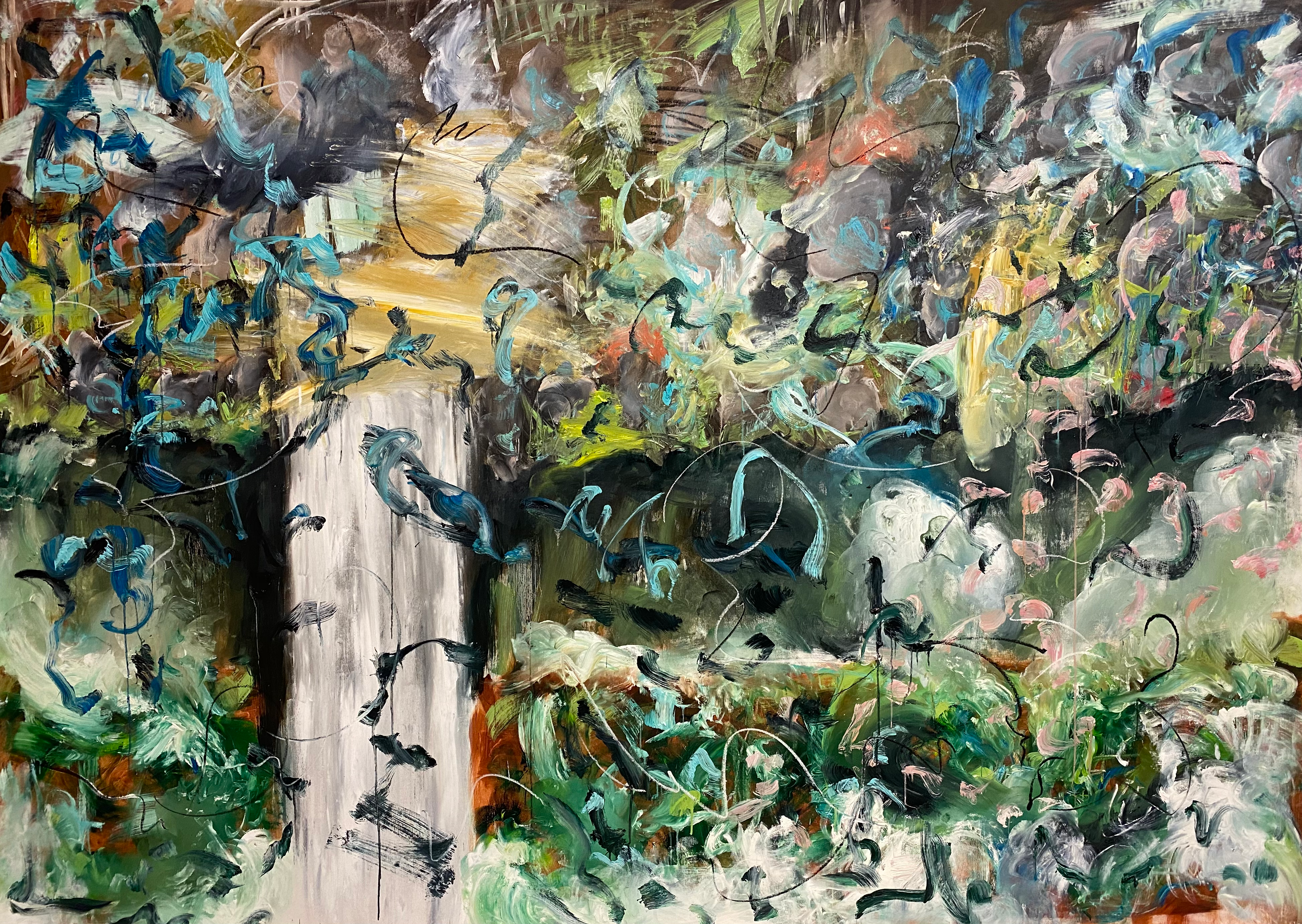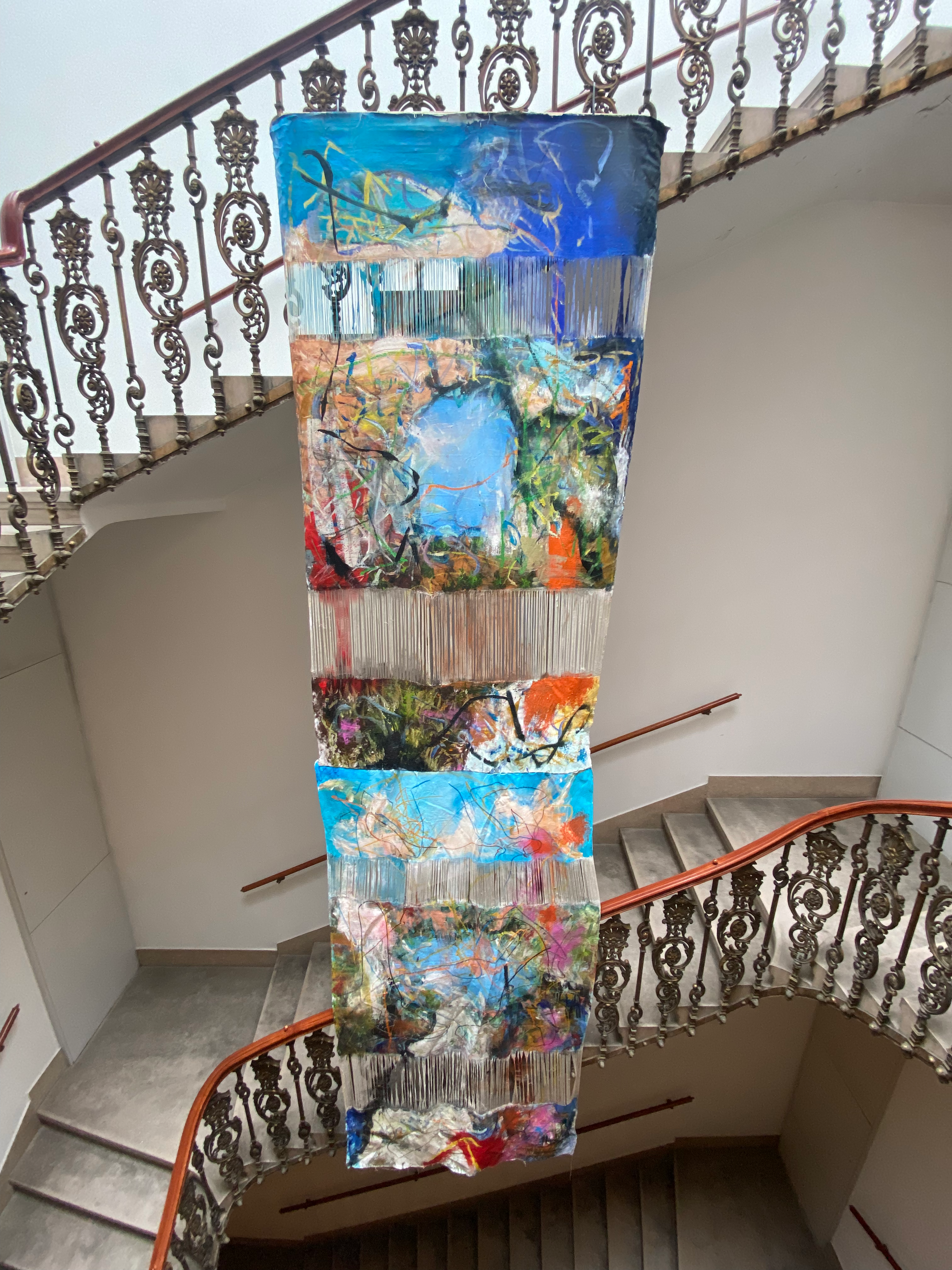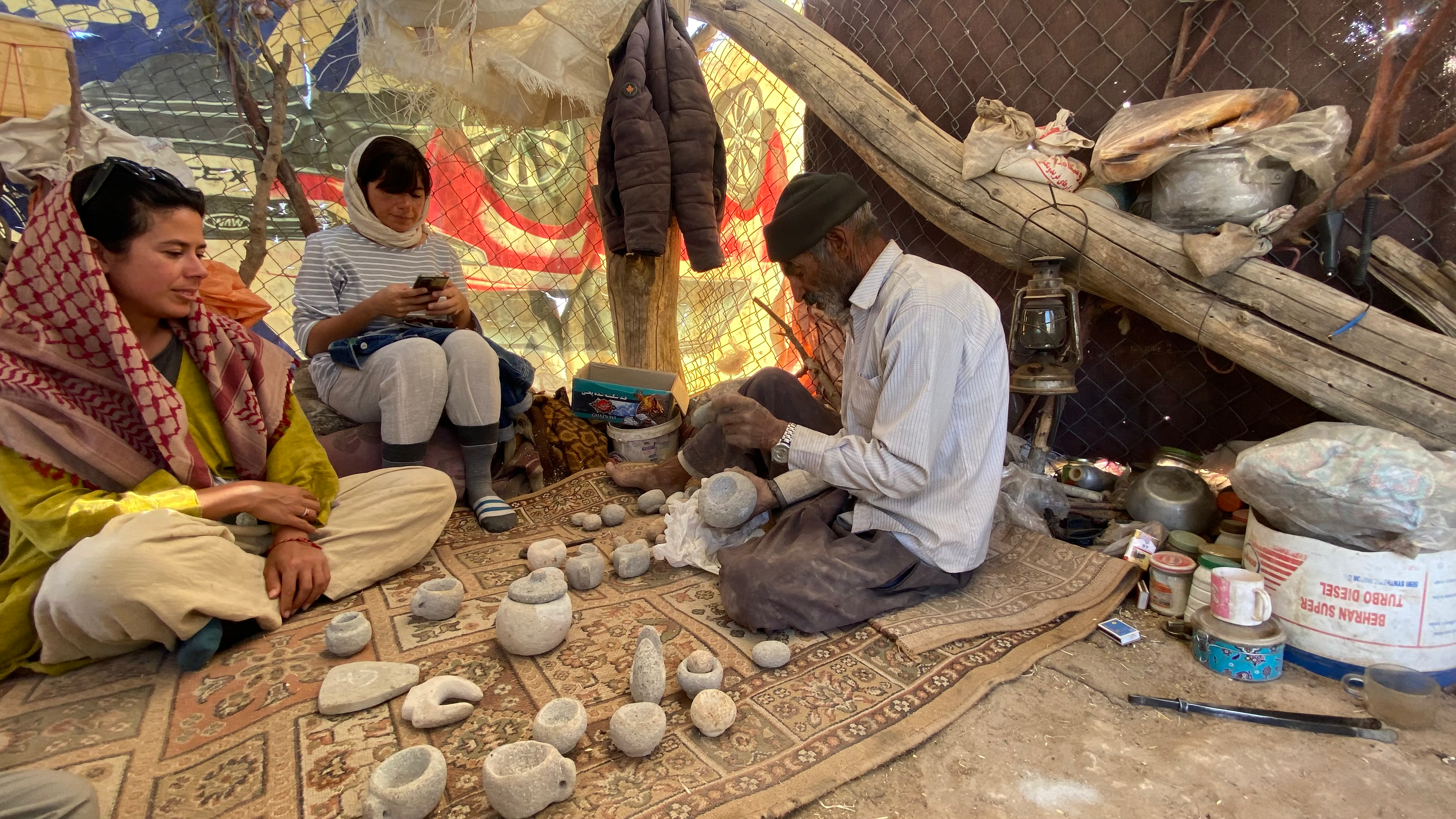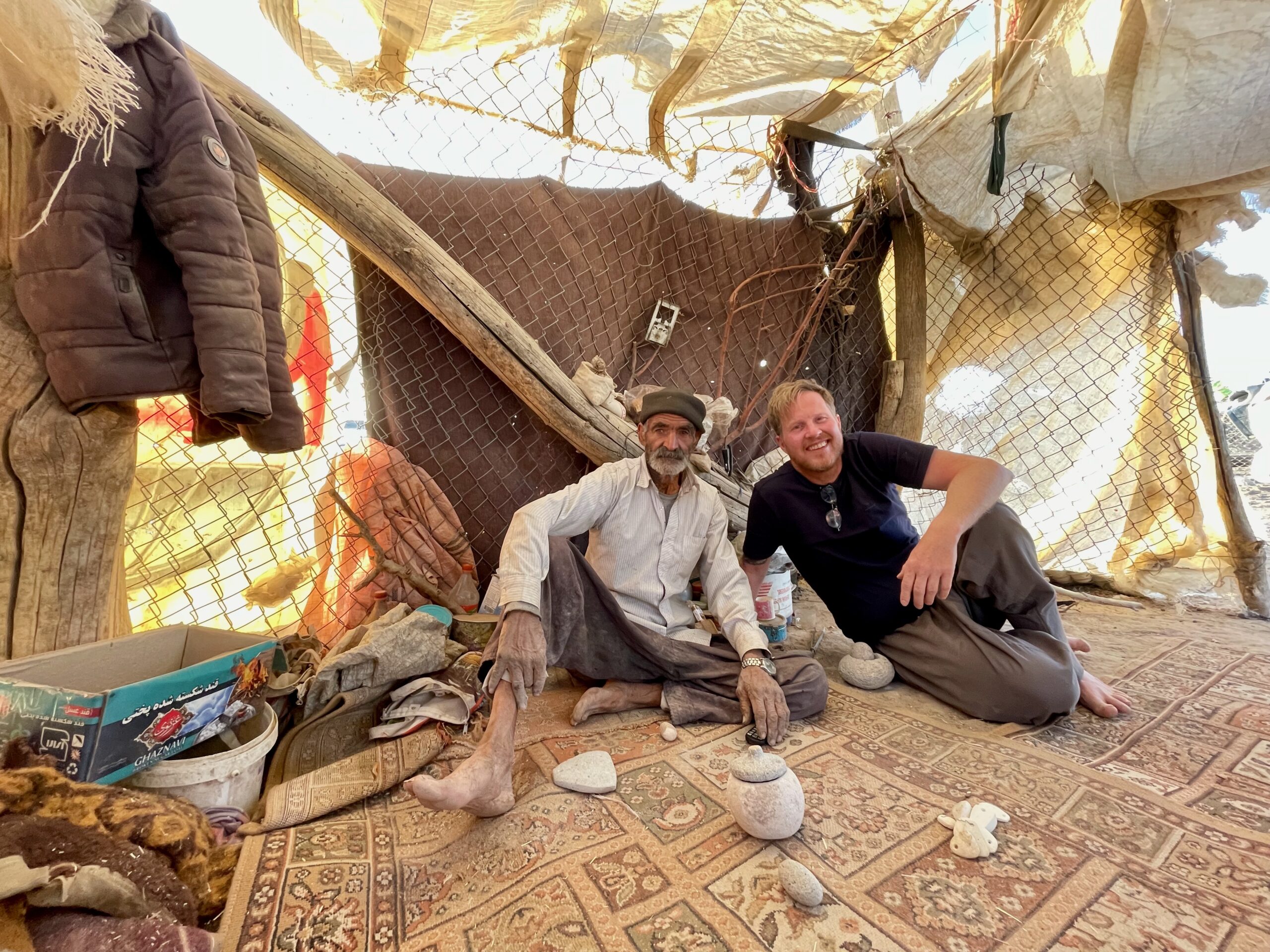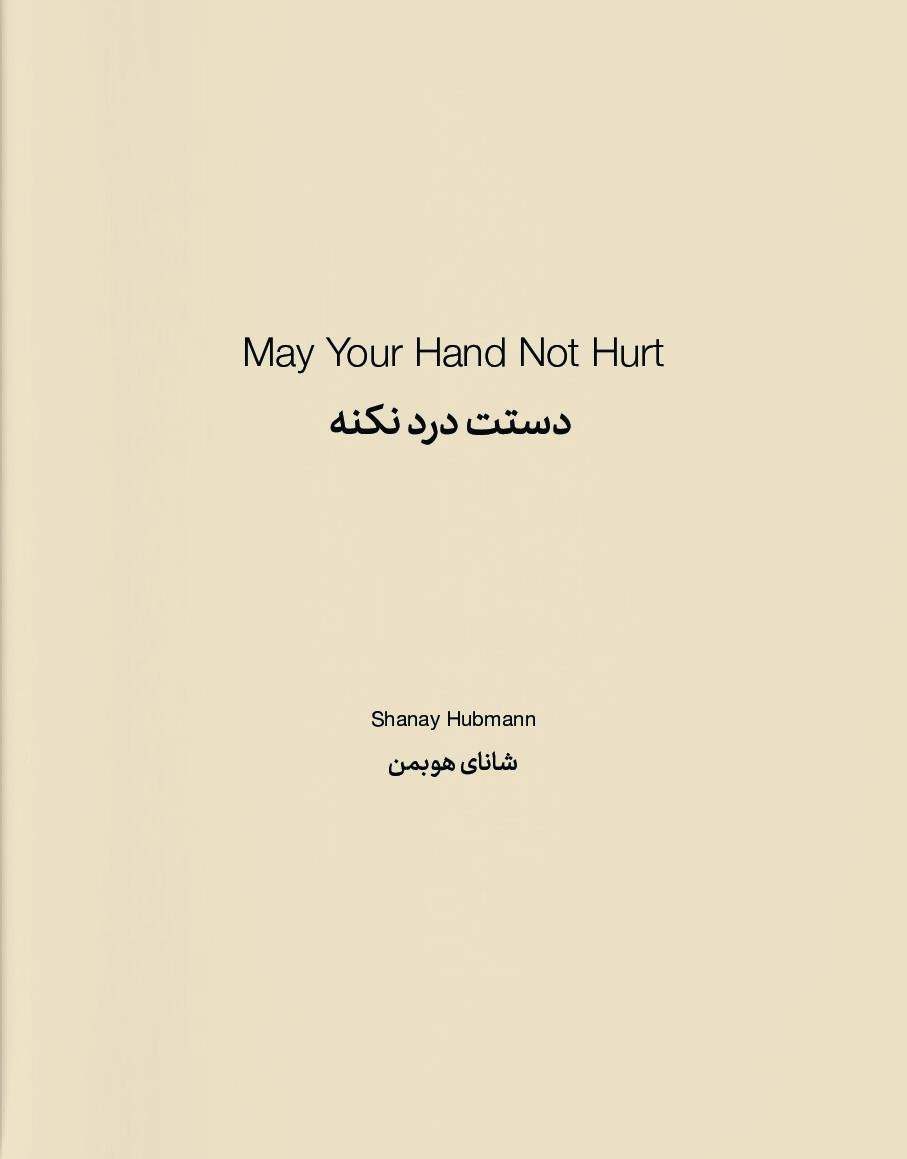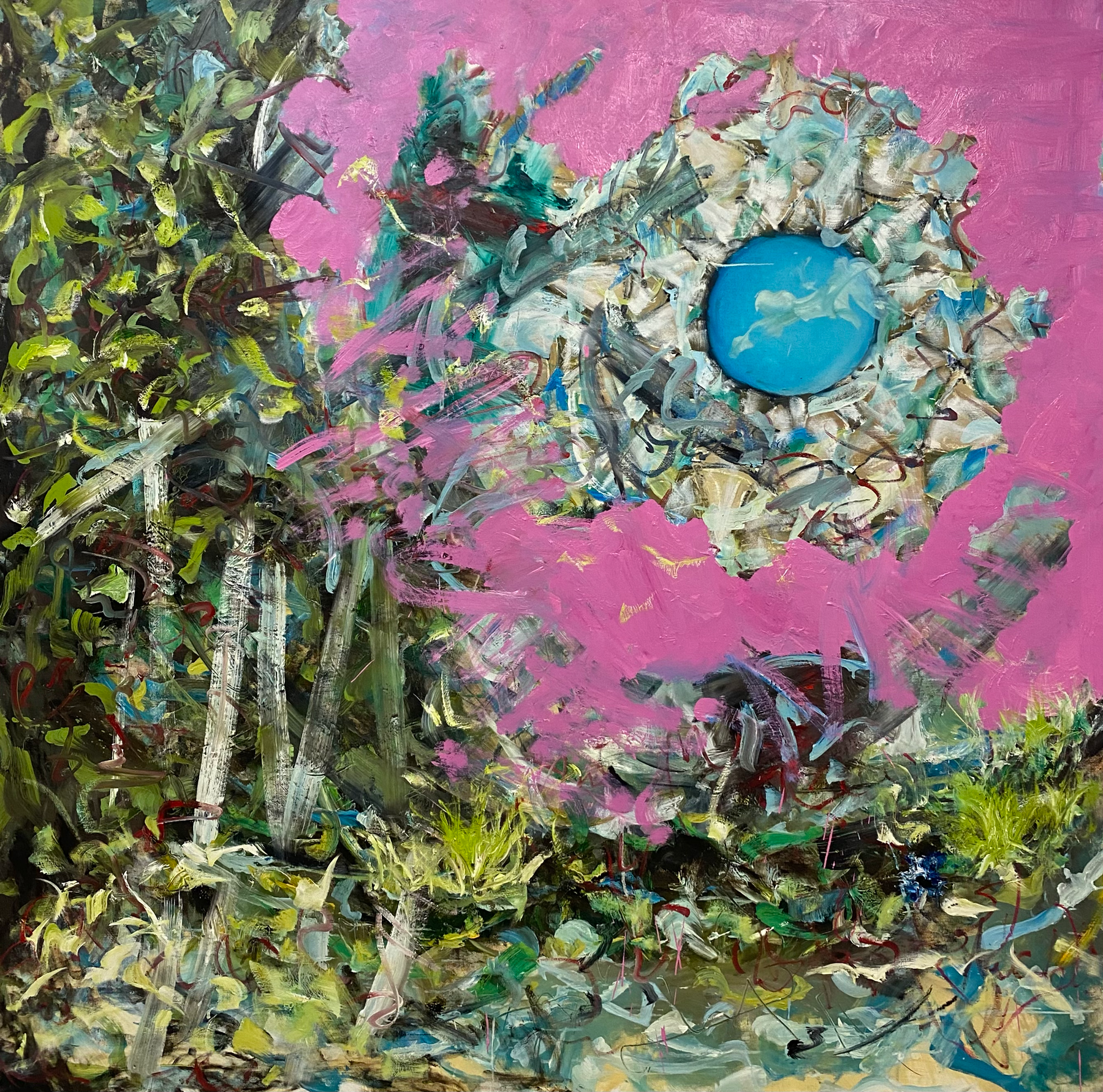
May Your Hand Not Hurt
Jakob Veigar Sigurðsson
In collaboration with: Shanay Artemis Hubmann
2. September – 22. December 2023
Jakob Veigar (born 1975 in Hveragerði, Iceland) currently lives and works in Vienna. His u-turn into the art world happened quite late in life, after a whole life and career as a civil engineer.
Jakob graduated with a Bachelor’s degree from the Icelandic University of the Arts in 2016, and continued to become „Herr Magister“ at the Academy of Fine Arts in Vienna in 2019. Painting is Jakob’s main medium, inspired mainly by personal experience, an alcoholic mind that tries to understand the society he lives in, and his deep connection to nature. Jakob has used his journeys to culturally diverse places such as India and Iran to expand the horizon of his work, and to deepen both his understanding and his connection to countries very different from his own.
Despite a rather short career in the art world, Jakob’s works can be found in private collections all over the world. His paintings have been exhibited in Iceland, around Europe, and in China. “May Your Hand Not Hurt” is the story of a passage from Iceland to Iran; of an artist who chased love, between continents, in times of a global pandemic. An odyssey into one of the world’s oldest civilizations, where he found pieces of himself in landscapes vastly different from his own. Of a love lost on the way, all while collecting stories and works from artisanal and nomadic communities all over Iran. From dirty rags all the way to priceless textiles and embroidery, Jakob Veigar uses these materials to create an entirely new world of his own.
————————
Jakob Veigar, the Alchemist
Recitar! Mentre preso dal delirio,
non so più quel che dico,
e quel che faccio!
Looking at the world with new eyes is part of Jakob Veigar’s quest. He feels that his generation in Europe at the end of the 20th century was raised with “toxic masculinity”, that he and other men were taught to have and show no feelings, no emotions. In the painting Sometimes she has to comfort me (2020-21), he tries to come to grips with the male image and these “old” feelings. His younger years as a civil engineer, “making tunnels and hard things”, as Veigar describes it, was complimented by his passion for metal music and its excessive lifestyle. Not only as a music fan, but also on stage or in the recording studio as a guitarist in various punk and indie bands, Jakob Veigar constantly pushed the boundaries of what was acceptable—to himself, and to society.
Eppur è d’uopo, sforzati!
Bah! Sei tu forse un uom?
Tu se’ Pagliaccio!
Jakob Veigar translates his hunger for more of everything, be it pleasure or pain, into his paintings. This passion for life imbues his oeuvre with a bristling tension that finds release in the color explosions on his canvases. Looking at his paintings is a feast for the eyes. One is at first dazzled and seduced by the excitement of the color palette. Yet upon longer contemplation, suggestions of forms begin to emerge. One begins to recognize features of landscapes: flowers, trees, waterfalls. Rocks, presented as individual entities, or as couples. Sometimes the uproar on the canvas subsides, and Veigar shows us figures: abstracted roly-poly bodies with lopsided grins. Often alone, but also appearing in pairs, these foolish Adams and Eves trapped on the canvas mirror us with their determination to find a smile in the world, no matter what. These figures, naked, crudely rendered, seem vulnerable and brave at the same time. Offering up a smile to the world, sometimes with a flag or similar token of atonement in their hands, they seek acceptance while simultaneously reveling in their benignity and their grotesqueness.
Vesti la giubba e la faccia infarina.
La gente paga, e rider vuole qua.
E se Arlecchin t’invola Colombina,
ridi, Pagliaccio, e ognun applaudirà!
The title of the show May Your Hand Not Hurt is an Iranian greeting in Farsi, which people say to those who work with their hands, or which handworkers say to each other as a blessing and wish for good fortune. Perhaps Jakob Veigar wants to include himself under this spell of protection, because a painter is in need of his hands as is any craftsman. Perhaps also he would like to extend this blessing as a healing to his heart. It is the wish of Veigar that this exhibition is the finale of the romantic relationship he has entertained with the Iranian-Austrian writer Shanay Artemis Hubmann, whose texts he incorporates into the presentation. Hubmann, living in Iran, was the liaison whose assistance in procuring these unique canvases makes her the concrete as well as metaphysical locus of this exhibition.
Veigar describes this whole endeavor as a love story with Iran: the country and the people. Although after discovering this macrocosmic love, his personal microcosmic love relationship dissipated, his tale has a happy ending. As a painter, Jakob Veigar’s ultimate interest always comes back to the medium of paint itself, and what he can wrest out of the material. He says that he hopes the viewer realizes that May Your Hand Not Hurt is “a painterly exhibition”.
“The canvases are very performative,” according to Veigar. “They are really about the act of painting”. The canvases have gaps in them, places where only strings can be seen, where the loom did not weave the cloth whole. These strings between sections of the long banner-like canvases represent the idea of separation for the artist. The pandemic created an insuperable separation in his relationship with Hubmann. As Jakob Veigar recounts, “I was living with her ghost for a year”. He allows the paintings in this exhibition to express this emptiness, isolation and longing—by providing us with the exact opposite of what we might expect for representing loneliness. Jakob Veigar has created a smothering, overpowering jungle of expressive canvases full of paint. Canvases suspended from the ceiling, canvases surrounding us on the walls. His exhibition is the equivalent of stereo surround sound for the visual senses, because, Veigar is convinced, “the eyes are something magnificent” and deserve a rich banquet.
Tramuta in lazzi lo spasmo ed il pianto
in una smorfia il singhiozzo e ‘l dolor, Ah!
Amid these colorful smorgasbords for the eyes, Jakob Veigar always leads us viewers back to calmness. The choice of his palette and the indications of his brushstrokes and hand gestures reveal tranquil scenes of nature, composed contradictorily from the agitated and energetic application of paint. Nature is everywhere in Iceland, and that is one of the reasons Veigar says he is glad to live outside of Iceland now. “If I was there, I wouldn’t ‘do’ anything, because there is so much nature. Nature is everything. I talk through nature. I bring nature from inside of me, wherever I am”.
As beautiful as nature is, Jakob Veigar is still very aware of its danger, and what a delicate balancing act we humans maintain in relation to it. He tells of how the Icelandic population almost disappeared several times over the course of history because of volcanoes, eruptions and every kind of natural catastrophe. In order to survive in Iceland, you have to be cold, hard. Historically, you had to be a strong soldier and a sailor of life, which he is. The name “Veigar” literally means “strong soldier”. Veigar’s canvases suggest the beauty of nature while at the same time, in their frenzy of color, remind us that nature is a maelstrom that can destroy us as well. Just like our emotional lives can.
Ridi, Pagliaccio,
col tuo amore infranto!
Ridi del duol, che t’avvelena il cor!
After the rainstorm there is often a rainbow, and after a great love comes more perfect love. Life is renewal, and transformation. The life force of nature is constantly pushing for its most exuberant form of expression. Jakob Veigar is a willing messenger of the élan vital, an alchemist of paint in search of the philosopher’s stone. He has taken the toxic masculinity of his upbringing, and as a maturing person, transubstantiated it. It’s easy to believe him when he says that he was obsessed with butterflies for quite a while after finishing his art studies. Viewing Veigar’s works is a positive and life-affirming experience. He creates harmony out of chaos; he allows his paintings to be an outlet for rage and to be a source of comfort. Jakob Veigar uses color and paint generously and richly. His canvases give us expansive and profound visual experiences that immerse us into the symphonic ecstasy of life.
– “Vesti la giubba”
from Pagliacci (1892)
by Ruggero Leoncavallo
© Essay: Dr. Renée Gadsden, 2023
Download PDF here:



